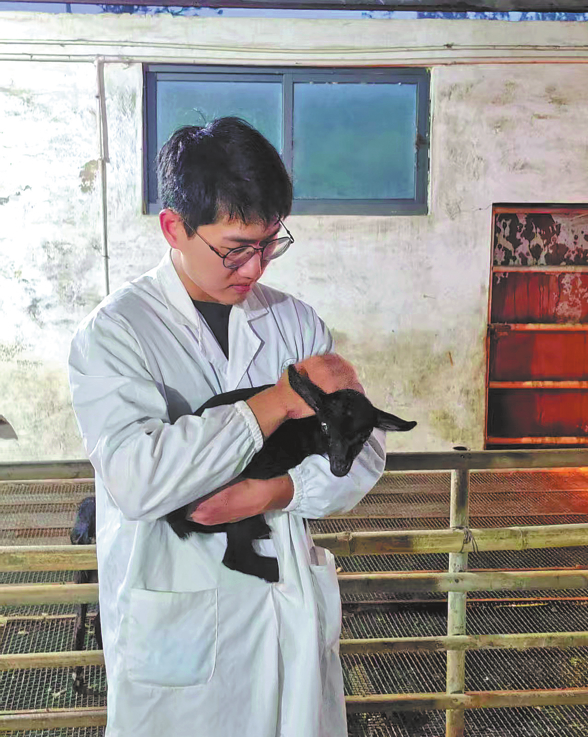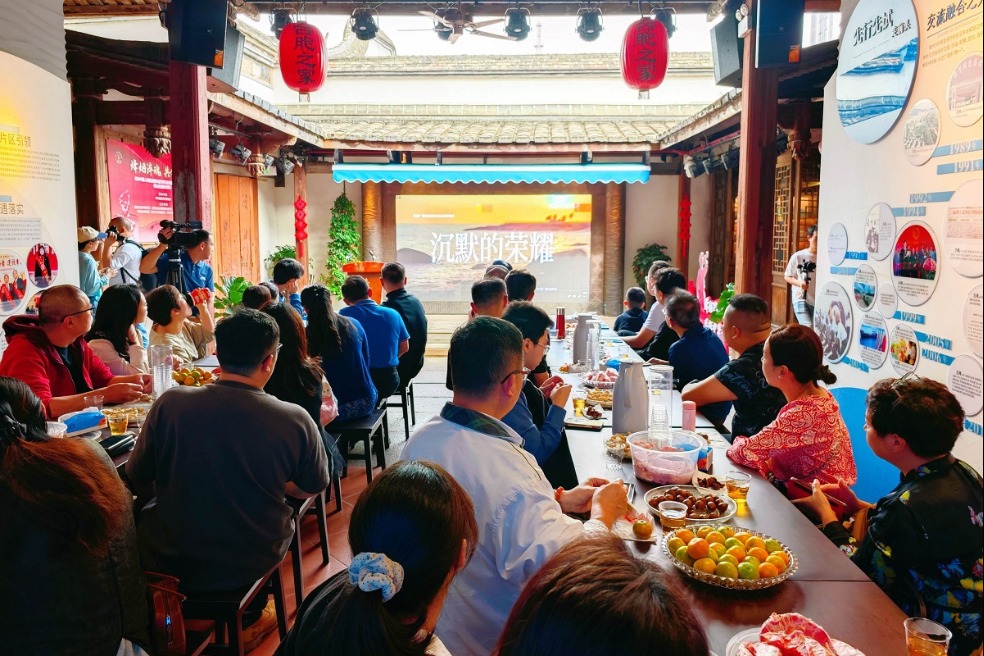World's first gene-edited black goat fit for hot days


Chinese researchers have produced the world's first gene-edited black goat designed to tolerate high temperatures and humidity, a breakthrough that could help protect livestock production as climate change intensifies.
The animal, born on Aug 25 in the coastal city of Zhanjiang, Guangdong province, is the first "PRLR" (prolactin receptor) gene-edited black goat. Named Hai Yang, or "ocean goat", it is being raised at Guangdong Ocean University's engineering research center for livestock and poultry breeding.
Gan Shangquan, chief scientist of the special research team, said the PRLR gene-edited black goat that is now in good health has begun to explore and feed on fresh tender leaves, nurse normally, and receives artificial supplementary feeding of milk powder at night. "The goat, with a 246 bp (base pairs) sequence knocked out in the PRLR gene and weighing about 1,100 grams at birth, has grown to weigh nearly 4,300 grams, which is 300 grams more than that of the control group," Gan told China Daily.
Specifically, the PRLR gene-edited goat has a larger appetite and a greater advantage in weight gain, he said. Statistical data from the first 20 days showed, on average, the PRLR gene-edited goat can gain 50 grams more per day than the ordinary goats (the control group), said Gan, a researcher with the university in Zhanjiang in the western part of Guangdong's Leizhou peninsula.
"The heat-tolerant gene-edited goat, due to its ability to resist heat stress, is less affected by hot weather. And it shows no reduction in food intake, gains weight faster, and thus it has a relative advantage in this aspect," said Gan, adding rearing the black goats is no different from rearing ordinary goats in the same breeding environment.
After embryo transfer and a 150-day gestation period, Hai Yang was born on Aug 25, more than two weeks premature.
The birth of Hai Yang is a major scientific and technological breakthrough, marking significant progress in China's innovation of black goat germplasm resources that are adaptable to the hot, humid climate of tropical coastal areas and suitable for grazing in coastal "tidal flat pastures", Gan said.
"It provides a new germplasm guarantee for the sustainable development of herbivorous animal husbandry in southern China and coastal regions," he said.
The global greenhouse effect has led to frequent occurrences of high-temperature and high-humidity weather, and heat stress has become one of the major factors restricting livestock production, insiders said.
It not only causes a decline in animal breeding performance, reproductive disorders and health issues, but also significantly increases livestock mortality and reduces feed conversion efficiency, they said.
According to Gan, continuous high temperatures in the southern Chinese region in summer and global climate change pose severe challenges to the livestock and aquatic industries.
Economic losses in the livestock industry caused by heat stress account for 20 to 25 percent of the industry's total output value, while in the aquatic industry, the proportion is even as high as 50 percent.
According to incomplete statistics, the annual economic loss in China's livestock industry due to heat stress is more than $10 billion.
Therefore, breeding new livestock and poultry varieties with strong heat resistance and outstanding stress tolerance has become an urgent need to address climate challenges and ensure the security of meat supply, he said.
Gan's team began building platforms, selecting research topics and conducting research for the PRLR gene-edited goat in November 2022.
The hot and humid environment in South China's coastal areas is theoretically not very suitable for raising goats and sheep, with very large economic losses caused by heat stress every year.
"That makes researching breeding of livestock with heat-tolerant PRLR genes a requirement of the times to achieve high-quality development of animal husbandry in the country's subtropical and tropical regions," Gan said.
The achievement (the birth of Hai Yang) is another important sign that China has stepped into the international forefront in the field of livestock and poultry biological breeding, and also provides an innovative solution to address the challenges of agricultural production under global climate change, Gan said.
Gan said the second and third batches of PRLR gene-edited goats will be born at the end of November and early December, meaning Hai Yang will no longer be alone.
"Meanwhile our multifetal gene-edited black goats are also about to give birth. And B-ultrasound results show that two female goats are pregnant with 6 to 7 lambs each, and their expected delivery date is around the corner," he said.
Regarding multifetal gene-edited goats, the research is also the first in China, with no reports of it worldwide, he said, adding it is still in the initial phase now.
"The gene-edited black goats are under closed management, and it takes some time for us to evaluate the safety and production performance," he said, adding that after testing the heat tolerance of the small population, his team also needs to test the biosafety of the black goats.
"Once these two tests are completed, we can apply to relevant departments for large-scale promotion of the gene-edited black goats," he said.
zhengcaixiong@chinadaily.com.cn





































